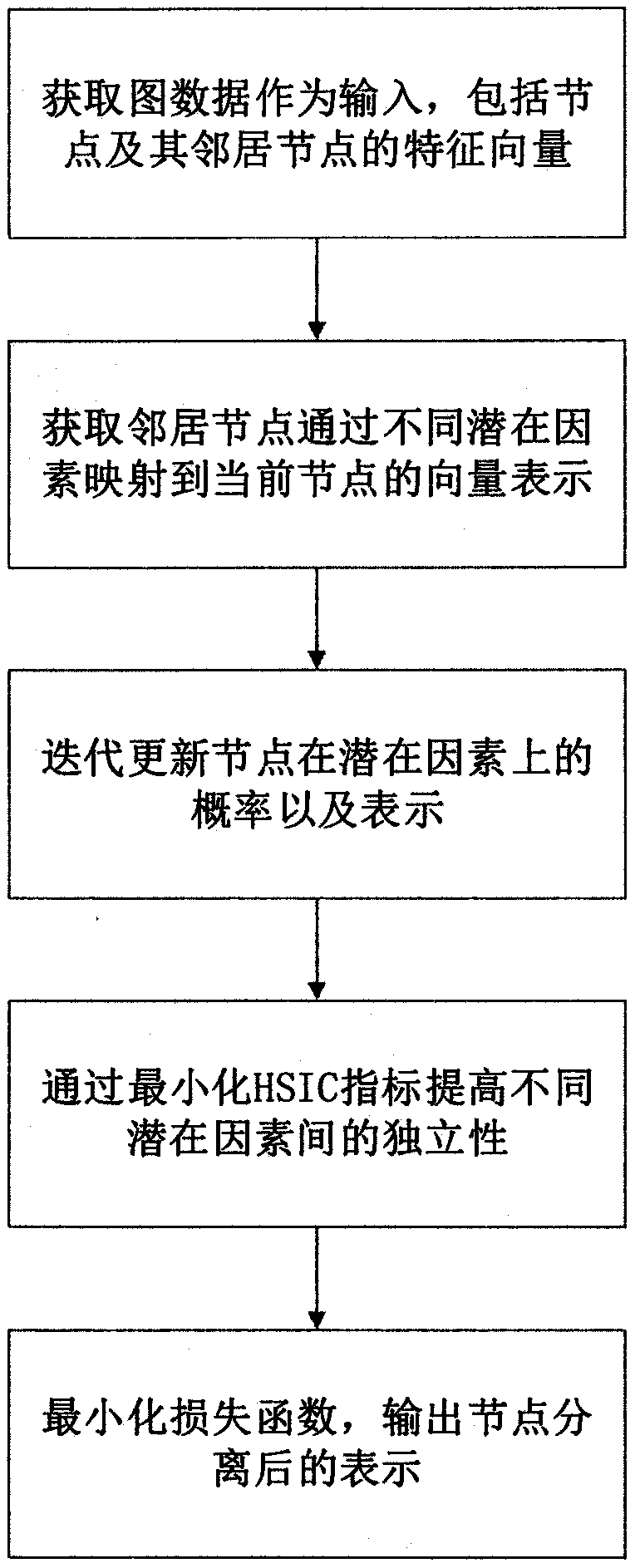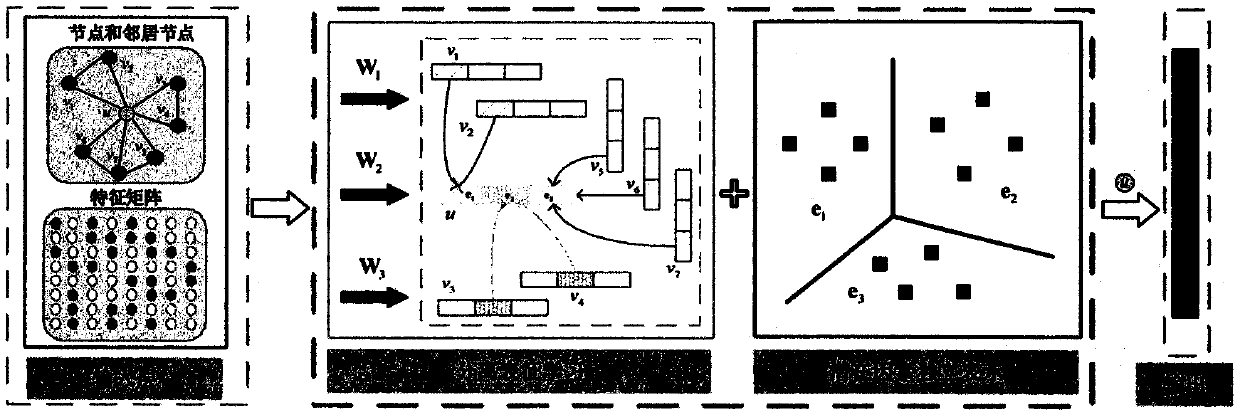Independent decoupling convolutional neural network representation algorithm for graph data
A convolutional neural network and graph data technology, applied in the field of decoupling table learning algorithms, can solve the problem of ignoring the independence of latent factors, and achieve the effect of improving the quality of decoupling representation
- Summary
- Abstract
- Description
- Claims
- Application Information
AI Technical Summary
Problems solved by technology
Method used
Image
Examples
Embodiment Construction
[0019] The present invention will be further described in detail below in combination with specific embodiments. figure 1 The flowchart of the decoupled representation learning algorithm based on graph convolutional neural network of the present invention is given. Such as figure 1 As shown, a decoupling representation learning algorithm based on a graph convolutional neural network of the present invention includes:
[0020] 1. Obtain graph data as input, including feature vectors of nodes and their neighbors;
[0021] 2. Obtain neighbor nodes and map to the feature vector of the current node through different latent factors;
[0022] 3. Update the probability of connections between nodes through different latent factors and the representation of nodes on each latent factor in an iterative manner;
[0023] 4. Improve the independence between different latent factors by minimizing the Hilbert-Schmidt independence index;
[0024] 5. Output the representation after node sepa...
PUM
 Login to View More
Login to View More Abstract
Description
Claims
Application Information
 Login to View More
Login to View More - R&D
- Intellectual Property
- Life Sciences
- Materials
- Tech Scout
- Unparalleled Data Quality
- Higher Quality Content
- 60% Fewer Hallucinations
Browse by: Latest US Patents, China's latest patents, Technical Efficacy Thesaurus, Application Domain, Technology Topic, Popular Technical Reports.
© 2025 PatSnap. All rights reserved.Legal|Privacy policy|Modern Slavery Act Transparency Statement|Sitemap|About US| Contact US: help@patsnap.com



